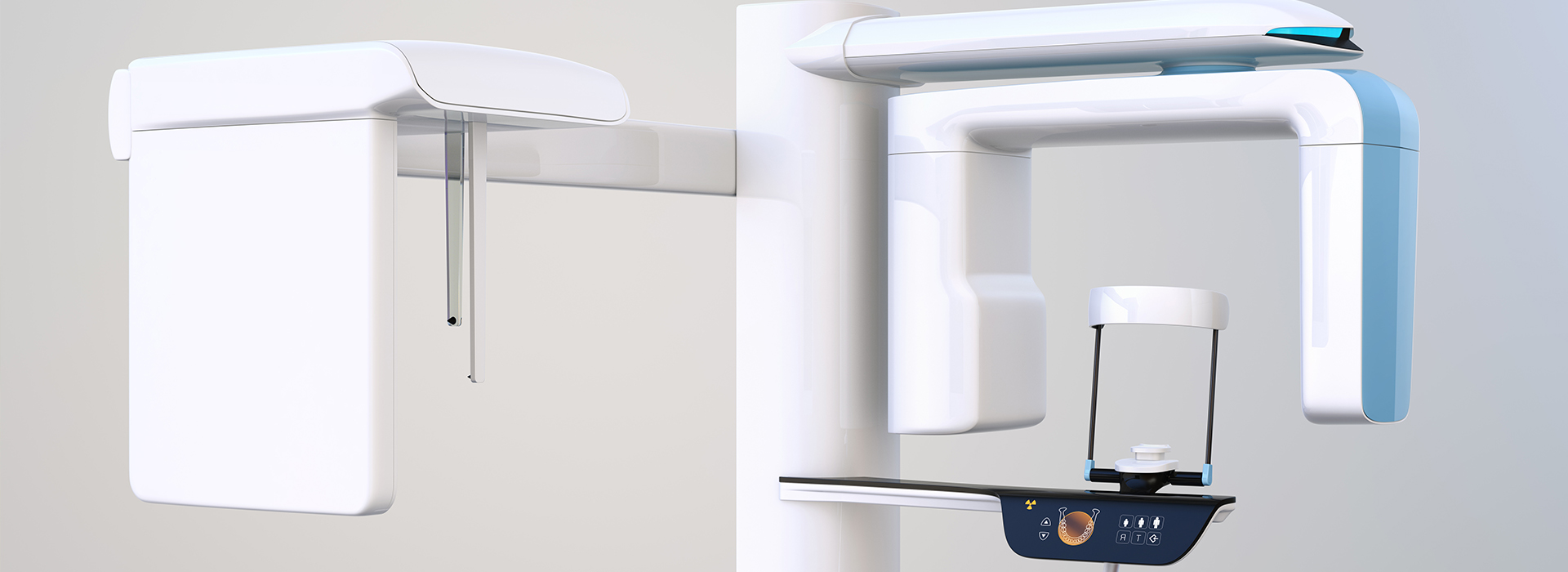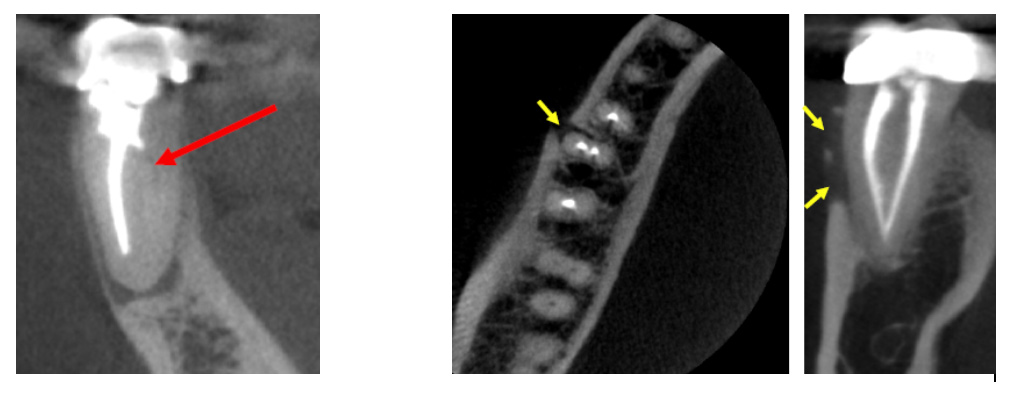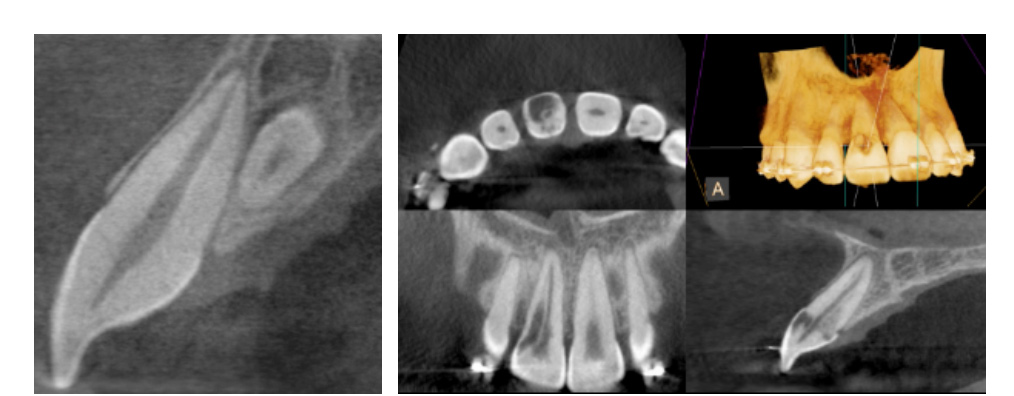
Cone beam computed tomography (CBCT) offers accurate and high quality 3-D representations of dental and facial structures. This enables our endodontists to more precisely diagnose an underlying problem, detect unforeseen defects, and minimize the need for exploratory procedures. CBCT facilitates more effective care and more consistent successful outcomes.
At our office we utilize the J. Morita Veraviewepocs 3D F40, which offers the highest resolution 3-D imaging at the lowest radiation dose.
Clinical applications of CBCT technology in endodontics include the following:
Occasionally, dental defects or pathology that deem a tooth non-restorable will be revealed on a CBCT scan. If this happens, the endodontist will advise you that the tooth cannot be saved.
(Pictures of missed canal, vertical root fracture, extra tooth, and resorption)

